Buying a kit car can be something of a lucky dip. Some of these vehicles are sadly lacking in the quality department, but the Blakely Bernardi was one of the better examples available on the market at the time. This 1983 model is a clean and tidy vehicle, although it does have a few minor rough edges that will need addressing. It is ready and raring to go, and is said to have a genuine 5,500 miles showing on its odometer. The Blakely is located in Robbinsville, North Carolina, and has been listed for sale here on eBay. Bidding has reached $5,100, but the reserve hasn’t been met. There is also a BIN option available, which has been set at $9,500.
When compared to other kit cars, the Blakely featured a few notable differences to the majority of such vehicles. The most obvious of these was that they were available as a turn-key proposition from the factory. This car is one of the factory finished vehicles, which makes it rarer than most. The other significant difference revolves around its construction techniques. I don’t know just how many kit cars utilized the ubiquitous VW Beetle frame as its basis, but that number would be somewhere around “a lot.” The Bernardi was based on a bespoke box-section steel frame, with the majority of the mechanical components sourced from a Ford Pinto or Mustang II. The body was also constructed of a sandwich of fiberglass and plastic, and while this made it heavier than most kit cars, it also made it more durable. The color finish is embedded in the gel-coat, which also means that they tend to age well. When you look at this car, it does present reasonably well for a 27-year-old kit car. There are several marks around the front of the car and on the front bumper. It is hard to tell whether these are chips, or whether these are bugs that didn’t get out of the way fast enough. Interestingly, this car features powder-coated bumpers, as the vast majority wore chrome. The Bernardi is fitted with a beige convertible top, although a hardtop was also available as an optional extra. The wire wheels appear to be in good condition, and the same seems to be true of the glass.
One of the features that set the Blakely apart from other kit car offerings, when new, was the quality of the interior finish and upholstery. This was something of a necessity, as the Bernardi was not a cheap investment. When it was new, its price in turn-key form was perilously close to that of a brand new Corvette. That meant that a new Bernardi cost somewhere between $21,000, and $23,000, depending on options. This was the main reason why very few completed cars rolled out of the Blakely factory. The interior of this car is looking quite tired for a vehicle with only 5,500 miles showing on its odometer. The owner only identifies some minor and repairable upholstery issues on the driver’s seat in the listing. However, there are some other problems that will need to be addressed. The most obvious of these is the fact that the vinyl has become unglued from the lower dash on the passenger side. I believe that this should be able to be glued back into place, so it shouldn’t be a huge problem. However, that is just the tip of the iceberg. The upholstery on both door caps is wrinkled and will need to be stretched back into shape. The vinyl on the console has also begun to come unglued, and this will need to be repaired. There is also a seam separation of the console vinyl on the passenger side. The next owner would need access to a heavy-duty sewing machine to correct this, so I suspect that a trip to the upholsterer might be on the cards. The carpet looks tired, and this might present a bigger problem. The next owner will need to hope that it will respond to a deep clean because finding replacement carpet sets is virtually impossible. If it can’t be revived, then it might also need the attention of an upholsterer or carpet professional.
The owner supplies no engine photos, but we do know that the Bernardi is powered by a 2.3-liter Pinto 4-cylinder engine, which is backed by a manual transmission. The transmission is a bit of a mystery because the owner indicates that this has recently been changed. Usually, the Bernardi would have featured a standard 4-speed Pinto transmission, but I get the impression that there might be something different in this car. The owner mentions improved performance. This may suggest that the vehicle has either been fitted with a close-ratio 4-speed, or possibly even a 5-speed unit. Regardless of what is there, the owner states that the car runs and drives exceptionally well. It has recently been fitted with new tires, along with new belts, new brakes, fresh fluids, and the vehicle has also recently been rewired. The 2.3-liter engine was the unit that Blakely recommended for the Bernardi, but they did acknowledge that there were other options available for individuals with a sense of adventure. These included the 2.8-liter Cologne V6, or for those who were seeking a real thrill, it was possible to shoehorn a small-block Ford V8 into the engine bay. In a vehicle that tipped the scales at around 1,800lbs, that would have provided some mighty fast motoring!
This 1983 Blakely Bernardi is a nice car that promises to deliver an enjoyable motoring experience. However, it isn’t perfect and will need a few rough edges smoothed-out to be at its best once again. My biggest issue here is that I believe that the BIN price is a bit optimistic. However, the fact that it is one of the few factory-finished cars is a point in its favor. I wrote about another Bernardi in this article last year, and that had a BIN of $7,250. The owner also doesn’t mention the inclusion of a hardtop, which is a factor that is worth considering. What do you think?






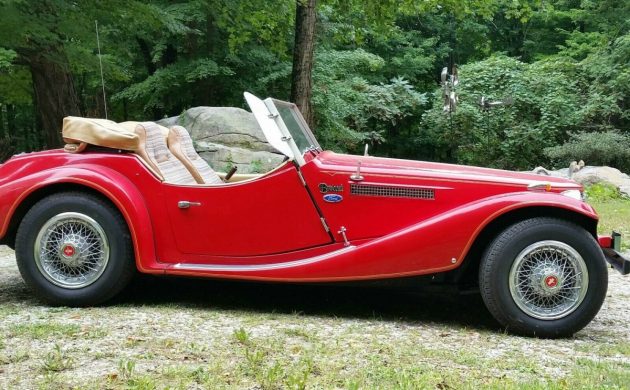
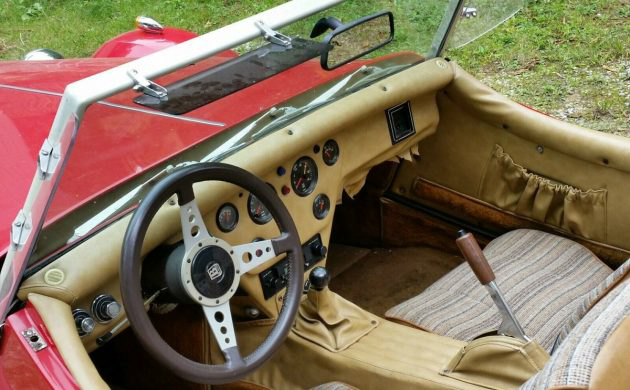

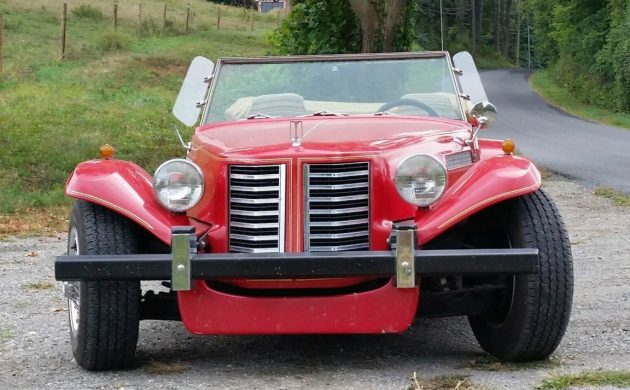

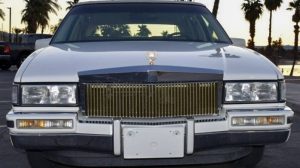

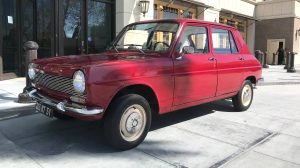


The first thing I would do is to replace that Pinto shifter knob.
I like the styling better than many kit cars, but the bumpers , which look like a piece of box steel cut to length, are too plain and would have to go. A Model A bumper might look better if it were the correct width.
I think this car actually met the applicable vehicle codes for a new car manufactured by an OEM in 1983, which explains both the bumpers’ heights and their strengths.
It reminds me of the homemade roadster
I saw in a 1951 issue of Popular Mechanics. Like this car, the fit and finish
was impeccable. The grille and fenders
remind me of the ’51 car while the inside
has a more modern vibe to it. I’ve seen a
lot of kit cars over the years but never one like this. Thanks for posting it, now I can
honestly say that I’ve seen one.
I just finished a Morgan +4 that has a design style similar to this. I like the style of the Morgan but while driving and asked about the Morgan I tell people that it is fun but I would rather have a kit car.
This Blakely is a good example. I like the side view and it looks good. For the rear I would dump that luggage rack and replace the tail lights something like a TR3 tail light would look good. The front design is ok but I do like the morgan’s better.
The interior of this is much better than the Morgan, it might even be a little comfortable.
The pinto engine is a decent motor and I think some morgans even used them. It is much better than that MF tractor motor in the one I just finished. The cologne v6 or a zetec would be a nice upgrade and you could change the motor without worries about originality.
My guess is that the box section frame would be a good upgrade over the Morgan. Most people are under the incorrect assumption that a morgans frame is wood, it is steel and only the chassis frame for the body is wood. It also has the structural rigidity of a wet noodle. This Blakely actually has a suspension and if it is pinto based it is actually pretty decent. Much better than the teeth rattling sliding pillar front and ox cart rear of the moggie.
So I like this car, I like that 1930’s style married to a more modern design, but not so modern that it is a technology night mare.
Just, no.
I see that it has three wipers, I’m wondering if the cab is a MG Midget? I acquired a Gatsby that is built using a Midget cowl, it is on a full frame with a 302 Ford. it looks similar to this, mine is registered as a 1971 Ford
Cowl is too wide and shaped wrong for a Midget. On the other hand that wiper setup is very compact and easy to shape into most any car. Can tell you it would have been nice to have had that extra width in our ’62 Midget, only car owned for several years. Agree the luggage rack isn’t it’s greatest feature but it might keep someone from driving the rear end up into the dashboard. All that said, I like this car, and would like it better with some decent bumpers on it.
I thought one of you guys associated with Barnfinds was a Bernardi owner. I think one of you also owns a Hathaway or Hunter, a TR based car of similar appearance.
I could live with the bumpers, rack and taillights, but those Pontiac wire wheel covers need to go…STAT! Maybe Minilites, Revolutions or something…anything.
Kenneth Carney, I built one of the Mechanics Illustrated roadsters in 1953-1954! Fast and fun. Wish I had a pic of it with me standing beside it. Sitting in it i could put my palm flat on the ground! Slower to build than a kit car, but lots more pride in accomplishment.